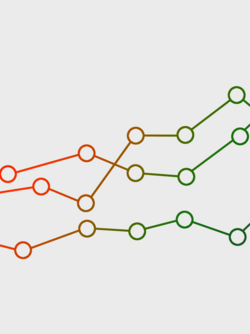Briefly explained: What is custom integration?
Zendesk offers numerous free standard integrations in the Zendesk Marketplace that cover many typical use cases. But what if your system is highly customized or has special requirements? In such cases, we develop customized interfaces that are precisely tailored to your processes and system landscape.
A custom integration (individual system connection) enables automated communication between Zendesk and your existing tools - such as CRM, ERP, online store, databases or internal platforms. We develop connections that are specifically tailored to your processes and do exactly what you need - no more and no less.
Here are some examples of customized Zendesk integrations. You can use them to:
- Display customer data from your CRM directly in the ticket,
- Automatically link order information from your online store,
- Transfer tickets from certain categories directly to other systems,
- Build your own metrics, dashboards or automations.
What can be integrated?
We synchronize, for example:
- Tickets, users, organizations
- Help center content, file attachments, custom fields
- External data sources such as CRM and ERP systems, stores or BI tools
Frequent integration partners:
- CRM: Salesforce, HubSpot, SugarCRM
- E-commerce: Shopify, Magento, Shopware
- ERP: SAP, Microsoft Dynamics
- Communication: Slack, Microsoft Teams
- BI: Power BI, Looker
Custom(er) service platform: technical basics and challenges
A powerful customer service platform such as Zendesk only unfolds its full potential when it is seamlessly integrated into the existing system landscape. In technical terms, this means that APIs must be used sensibly, data must be synchronized reliably and processes must be automated.

Security and maintenance: custom integrations in use
Our integrations meet the highest security standards: Authentication takes place via API tokens or OAuth2, and all data is transmitted exclusively via TLS-encrypted connections. We take system-side rate limits and API versioning into account to ensure stability and scalability .
Through structured logging, active monitoring and automated testing, we ensure reliable functionality - even with future Zendesk updates. Our architecture is designed to remain maintainable and flexibly expandable in the long term.
Technological basis for powerful integrations
For the development of individual Zendesk integrations, we rely on proven programming languages such as JavaScript (Node.js), Python, PHP or Ruby - depending on the requirements, system landscape and objectives.
For web applications and API connections, we use modern frameworks such as Express (Node.js), Flask (Python) or the Zendesk App Framework (ZAF). In this way, we ensure that your integration is not only technically reliable, but also flexibly expandable and future-proof.
Concrete use cases
- HubSpot ticket sync with real-time updates
- Automated synchronization of order data from Shopware
- Escalation workflows via Slack & Make
- User and authorization management via external admin systems
Limits of the Zendesk API: What you should know
Like any platform, Zendesk has certain limitations that need to be taken into account for integrations. These include API rate limits (e.g. 700 requests per minute), paginated data queries, limited batch sizes and some admin actions that cannot be executed via the API.
Thanks to our experience in developing complex integrations, we know exactly how to deal with these limitations efficiently - for example through intelligent request handling, caching or asynchronous processing.
Why atlantis dx is the right choice for your Zendesk integration
- Official Zendesk Premier Partner with a focus on individual integrations
- Many years of experience with complex system landscapes
- Personal contact for your project - from planning to go-live
- Agile project implementation: transparent, efficient and plannable
atlantis dx - Your reliable partner for Zendesk solutions

Thanks to our experience and technical expertise, we know exactly how to successfully overcome typical challenges with custom integrations - such as API limits, authentication, error handling, data mapping or testability - and can provide you with comprehensive advice.
As a certified Zendesk partner, we have extensive know-how and years of experience in using the software. We take care of setting up your customer service solution and are also available with ongoing support for questions and problemsBook an online appointment directly
Frequently asked questions about Zendesk integrations
The effort required depends heavily on the scope and complexity of the project: simple integrations - such as one-way data exchange with a CRM - can usually be implemented in just a few days. Complex projects, such as bidirectional ERP synchronization or extensive automation, on the other hand, can take several weeks. We advise you transparently in advance on the time frame and effort involved.
Proven tools such as Postman for API testing, the Zendesk Developer documentation for technical reference, the ZAF SDK for app development as well as logging and monitoring tools such as Sentry are recommended for the development of efficient and stable Zendesk integrations. In addition, sandbox environments for testing and Git for version control are indispensable components of a professional development workflow.
A structured maintenance process is crucial to ensure that an integration remains stable even after Zendesk updates. This includes the regular checking of changelogs and API versions, the use of automated tests and sandbox environments for controlled pre-tests. As an official Zendesk partner, we also have access to direct partner support - for early adjustments and maximum operational reliability.
The performance of a Zendesk integration can be significantly increased through targeted technical measures. These include the use of caching, the use of incremental APIs for a lower data load, parallelization of processes, a deliberate reduction of the payload and an optimized polling frequency. This keeps your integration fast, efficient and scalable - even with high data volumes.


